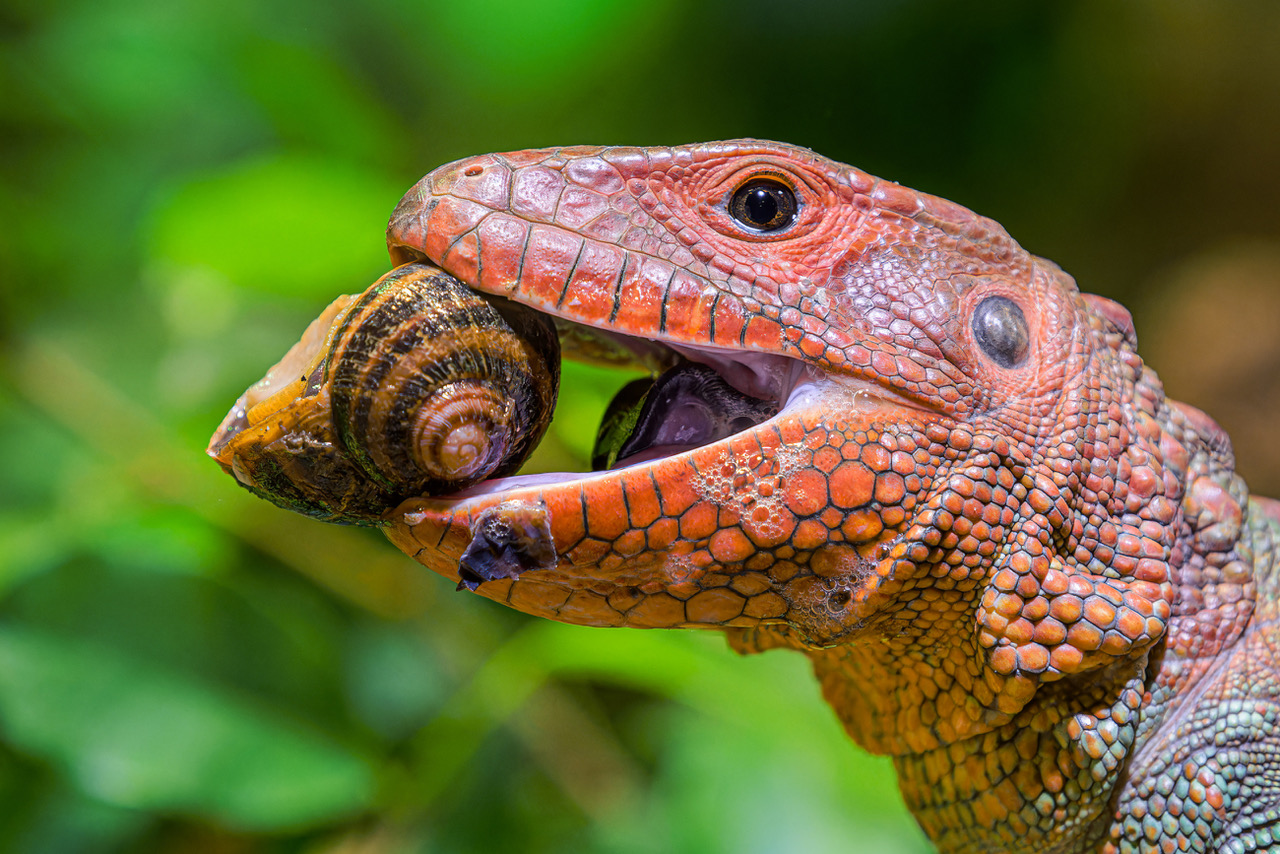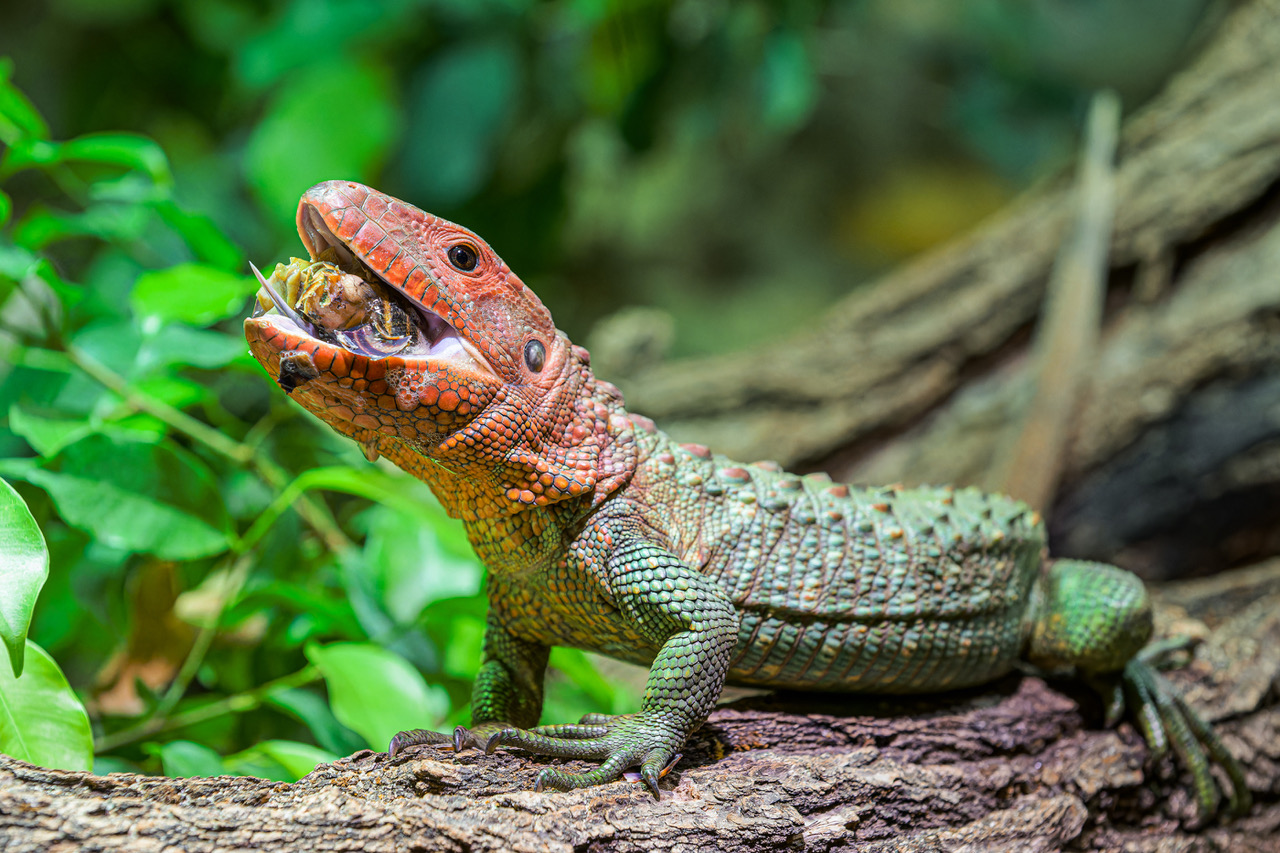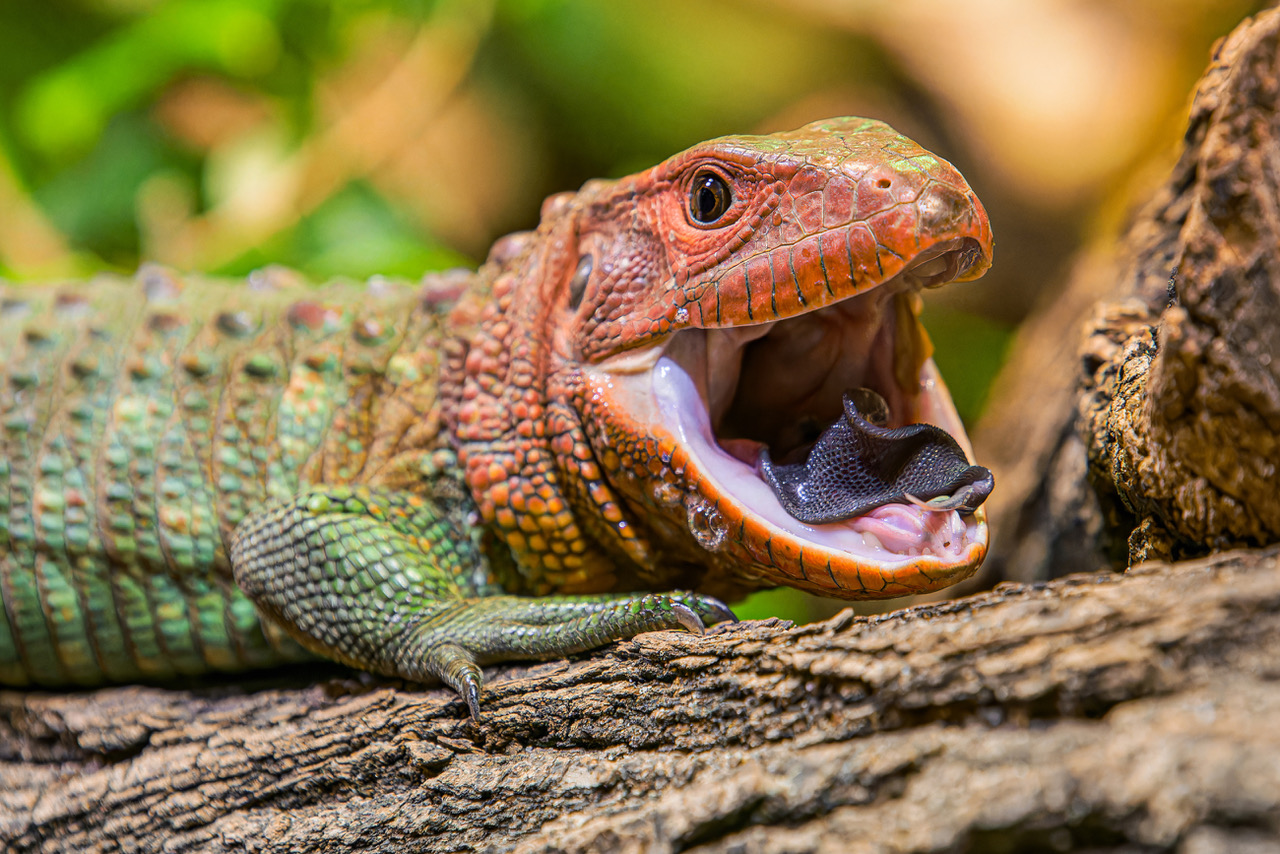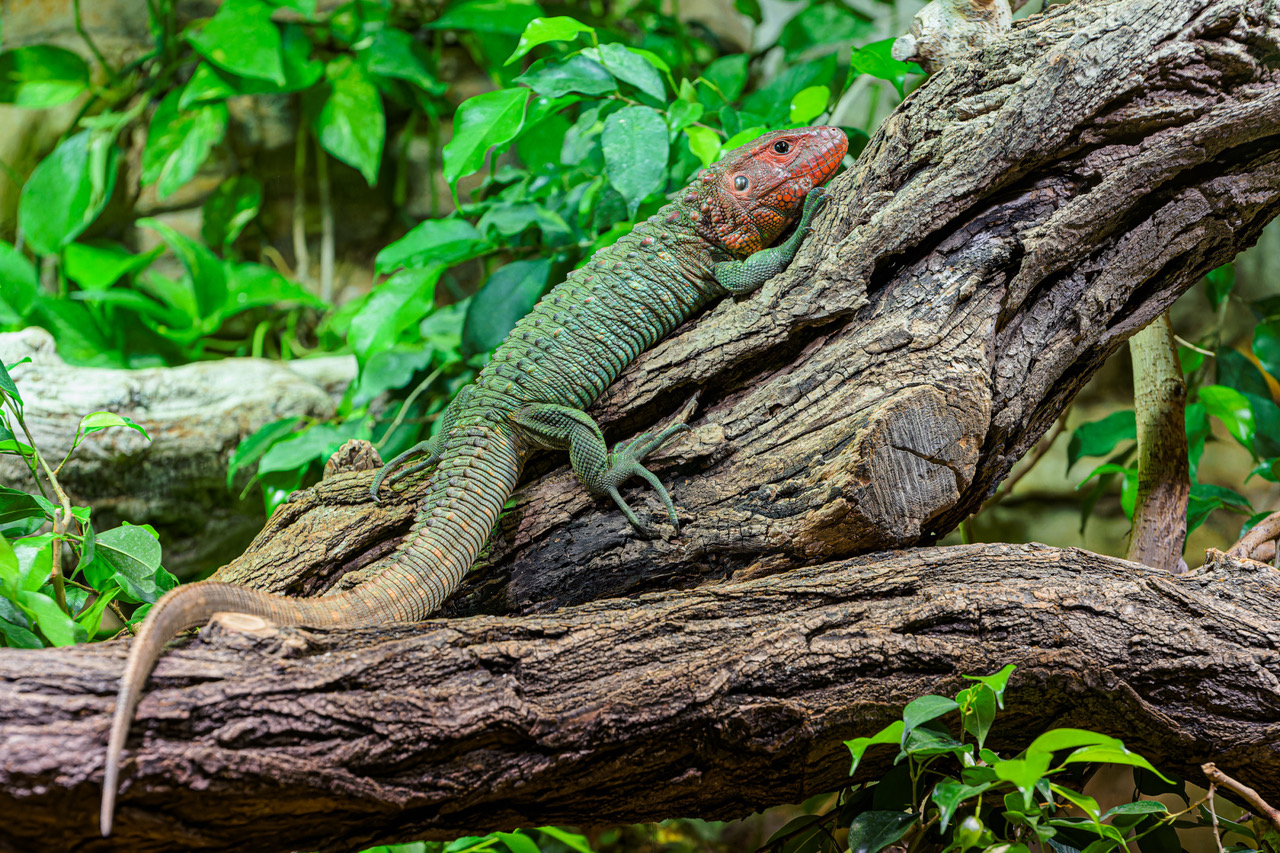
Strong jaws equipped with short, tile-like “stools” serve the dracaena as a nutcracker. Photo Petr Hamerník, Prague Zoo
Half aquatic, half arboreal, partly green, but also orange; but above all, uniquely snail-eating. Such are the crocodile-eating dracaenas, whose breeding at Prague Zoo has gained new blood. Five almost one-year-old lizards arrived in Prague from Basel with the aim of continuing the local successful tradition. In 1998, Prague Zoo was the first in the world to breed these sturdy reptiles. Visitors can see them in the Terrarium pavilion.
“I would compare it to polishing the family silver,” says reptile curator Petr Velenský. “In August, it will be exactly thirty years since we started breeding dracaenas. At that time, it was a creature known more from textbooks and museums, and there was little information about its life or even photographs. When we managed to breed it in 1998 and published the breeding methodology in the professional journal Zoo Prague Gazella, it was the first documented breeding of this species in human care and a real sensation. Our young went to India, for example, as part of an exchange for gharials.”

With their tongue, the dracaena skillfully turns its slippery bite several times and separates the sharp fragments of crushed shell, which they spit out. Photo Petr Hamerník, Prague Zoo
However, until recently, there was only one old female left at Zoo Prague, which the breeders had to peel from the snail shell and feed directly into its mouth. In order not to interrupt the important continuity of breeding, it was necessary to obtain young, unrelated individuals.
Five young dracaenas – three males and two females hatched last July – were acquired by Zoo Prague from colleagues from the Swiss Basel Zoo. The remaining female, who is now enjoying a peaceful old age in the garden’s backyard, has been replaced by this group of vital youngsters in a massive exhibit in the Terrarium pavilion. There, people can see their bizarre diet with their own eyes.

The massive orange head and large black eyes give the crocodile-like dracaenas an attractive appearance. The wide, dark tongue is also striking. Photo Petr Hamerník, Prague Zoo
“Dracaena crocodilia almost without exception seek out snails with shells. We usually feed them every other day with spotted snails, which are commonly bred on farms in our country for human consumption. They can eat up to five snails per sitting, which we provide thawed and warmed, whole, of course. The dracaenas then crack open the shells accompanied by loud cracking and slapping as they turn the morsel in their mouths, remove shell fragments with their tongues, and prepare the slippery body for swallowing,” says Velenský.
Dracaena crocodilia belongs to the family of lizards and, despite their Czech species name, they have very little in common with crocodiles, perhaps with the exception of a series of scales with low bumps and a fondness for water. They seek shelter from predators and food in the water. This species is found in the Amazon forests of South America. Due to their secretive lifestyle, relatively little is still known about them, and therefore the extent and status of the wild population cannot be well estimated.

A group of one-year-old lizards in the Terrarium pavilion in the lower part of Prague Zoo are now about 60 cm long, but as adults they can grow to twice that length and weigh around four kilograms. Photo Petr Hamerník, Prague Zoo

